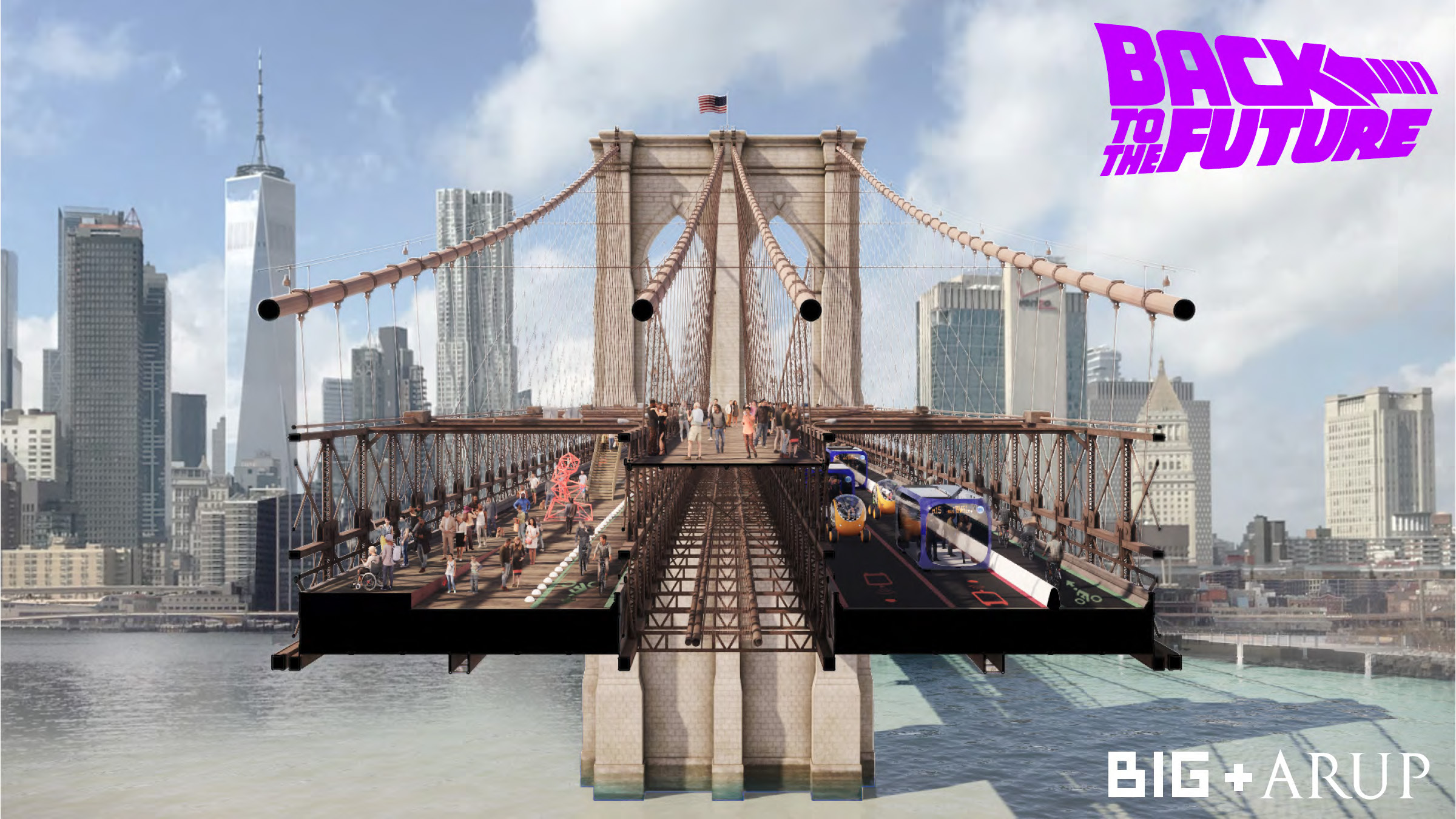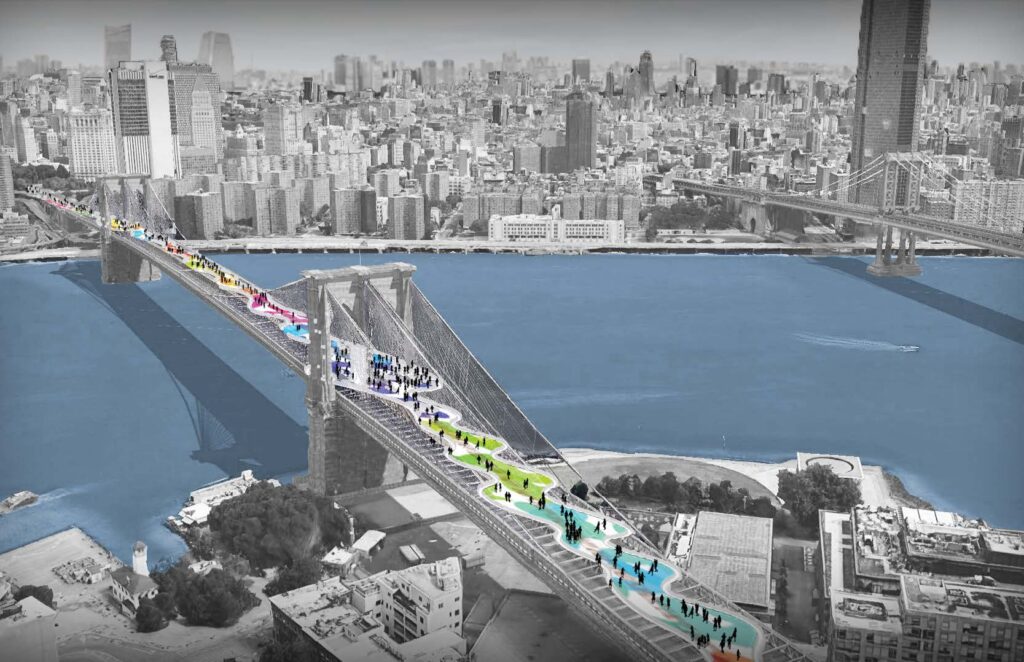The pandemic could change urban design for the better. In this case, New York City’s iconic Brooklyn Bridge has been reimagined for the post-Covid age, complete with glass walkways, ‘microforests’ and running paths. Olivia Palamountain reports
Reimagining Brooklyn Bridge was an international design competition that asked entrants to rethink New York’s famous Brooklyn Bridge (originally built in 1883) – not only for the 21st century, but a post-Covid world.
“Prior to the pandemic, at peak hours the promenade was crammed, uncomfortable, and sometimes unsafe. Thousands of pedestrians and cyclists crossed the bridge every day,” states competition co-sponsor the Van Alen Institute on its website.
Streets are common spaces and, as such, “must foster equitable, accessible, and sustainable transportation options, create a healthy and safe environment for all New Yorkers, and opportunities for small businesses and vendors to flourish,” the organisation says.
“The design of our streets and shared spaces must be responsive to the present moment and work to correct past injustices,” it continues, in special reference to the on-going pandemic.
 Danny Harris, executive director of Transportation Alternatives and one of the competition’s jurors, says: “With six lanes for traffic and one narrow, cramped right-of-way that pedestrians and cyclists must share, it’s clear that we haven’t been making the best use of the Brooklyn Bridge.”
Danny Harris, executive director of Transportation Alternatives and one of the competition’s jurors, says: “With six lanes for traffic and one narrow, cramped right-of-way that pedestrians and cyclists must share, it’s clear that we haven’t been making the best use of the Brooklyn Bridge.”

“This design competition will expand the conversation about how to unlock this critical link, and as advocates fighting for a bike- and pedestrian-focused future, we’re glad to be a part of it.”
Six finalists (three in each of the Professional and Young Adult categories) presented their designs in a virtual Design Showdown, garnering feedback from the public and the competition jury.
The winning design in the Young Adult category is pictured at the top of this story. Called “Do Look Down”, it imagines a glass surface over the structure’s existing girders, creating a “whimsical new pedestrian space activated through art installations and seasonal programming”.
The lower roadway would be for cars, scooters and bikes, and there would be space for street vendors and performers. There would also be powered kinetic paving, LED lighting and projections.
Another idea was the “Brooklyn Bridge Forest” (pictured below), which would see the incorporation of wooden planks from a sustainable “partner forest” community in Guatemala that protects a 200,000-acre rainforest.
Meanwhile, a bike path and reclaimed traffic lane create new space for cyclists, while biodiverse “microforests” at either end of the bridge would create splashes of green space.
Hyuntek Yoon’s “Brooklyn Bridge Strips” project, on the other hand, would vertically and horizontally separate the pedestrian, bike and vehicular paths, so everyone can enjoy the bridge at their own speed.
It also considers tourists and includes four observation decks at the edge of the bridge and the tower, allowing people to stop and take pictures of the Manhattan and Brooklyn skylines at their leisure.
What’s coming next? Trend reports available to download HERE





